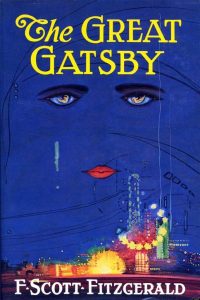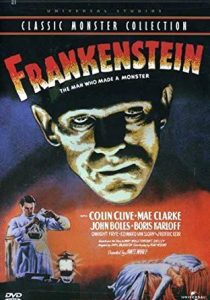 Something unusual happened at the beginning of this year, so abruptly that you may not have even noticed. On January 1, 2019, new works entered the public domain for the first time in 20 years! However, the “new” public domain works all date from the year 1923, which seems like a very long time ago for something to be excited about. Yet public domain is one of the most valuable resources a creative society possesses, allowing individuals to reimagine preexisting works, write sequels to them, and adapt them into other media. The early works of creative powerhouses such as Universal Studios, which made movies such as Frankenstein and Dracula, would have been impossible without the public domain, as well as numerous Disney adaptations of classic fairy tales and myths. How did the United States come up with a copyright system that takes so long for creative works to become public domain, and what does having these newer works becoming public domain signify for society? Come, take a look at what this all means.
Something unusual happened at the beginning of this year, so abruptly that you may not have even noticed. On January 1, 2019, new works entered the public domain for the first time in 20 years! However, the “new” public domain works all date from the year 1923, which seems like a very long time ago for something to be excited about. Yet public domain is one of the most valuable resources a creative society possesses, allowing individuals to reimagine preexisting works, write sequels to them, and adapt them into other media. The early works of creative powerhouses such as Universal Studios, which made movies such as Frankenstein and Dracula, would have been impossible without the public domain, as well as numerous Disney adaptations of classic fairy tales and myths. How did the United States come up with a copyright system that takes so long for creative works to become public domain, and what does having these newer works becoming public domain signify for society? Come, take a look at what this all means.
The 1976 changeover
For the longest time, U.S. copyright law was written in such a way that works would become public domain within a certain number of years after their initial publication. Because of this, a regular supply of works became public domain over the course of time. This was all upended with the Copyright Act of 1976, which changed the system from years after publication to “years after the death of the author” for works published after it was signed into law. Although this changed the system for newer works, many earlier texts continued to enter the public domain, including various books in the L. Frank Baum’s Oz series; The Secret Garden, by Frances Hodgson Burnett; and the silent film Nosferatu.
Enter the Sonny Bono Act - and a 20-year drought
 Sadly, this ended in 1998 with the passage of the Sonny Bono Copyright Term Extension Act. Ostensibly an attempt to bring U.S. copyright in line with the policies of European Union countries, which typically offer copyright for 70 years after death rather than the 50 specified in the Copyright Act of 1976, the Sonny Bono Act was effectively paid legislation sponsored by a number of wealthy rights holders, including the George Gershwin estate, Major League Baseball, and the Walt Disney Company. This act not only increased the term until 70 years after the author’s death, but it also extended all unexpired pre-1976 copyrights by 20 years, effectively creating a 20-year drought in new public domain materials!
Sadly, this ended in 1998 with the passage of the Sonny Bono Copyright Term Extension Act. Ostensibly an attempt to bring U.S. copyright in line with the policies of European Union countries, which typically offer copyright for 70 years after death rather than the 50 specified in the Copyright Act of 1976, the Sonny Bono Act was effectively paid legislation sponsored by a number of wealthy rights holders, including the George Gershwin estate, Major League Baseball, and the Walt Disney Company. This act not only increased the term until 70 years after the author’s death, but it also extended all unexpired pre-1976 copyrights by 20 years, effectively creating a 20-year drought in new public domain materials!
Now that the drought is over, and no new legislation has been successfully produced that would extend copyrights further, we can look at what actually came into the public domain this year. Some of the most significant works include Kahlil Gibran’s The Prophet, Robert Frost’s poetry collection New Hampshire, the silent films Safety Last! and The Ten Commandments, and the song, “Yes, We Have No Bananas.” Many of the works that became public domain this year may seem obscure and bizarre to modern audiences; the banana blight that inspired the “No Bananas” song is rarely referenced in today’s popular culture. Still, a full list of works newly placed in the public domain reveals many fascinating books and films, making one wonder what will become public domain over the coming years.
Coming Soon: King Kong and Frankenstein
 The advancement of works in the public domain has been much delayed due to the 20-year drought; if the Sonny Bono Act had not been passed, films, such as King Kong and Frankenstein, and novels, such as Gone With the Wind and The Sun Also Rises would already be available. However, this will slowly be rectified over the coming years, as a number of acclaimed books, films, and other works will go public domain. At the beginning of 2020, Gershwin’s “Rhapsody in Blue” will lose copyright protection. At the dawn of 2021, F. Scott Fitzgerald’s The Great Gatsby will join it in the public domain. And, on January 1, 2024, the classic Disney animated short “Steamboat Willie” will finally go public domain.
The advancement of works in the public domain has been much delayed due to the 20-year drought; if the Sonny Bono Act had not been passed, films, such as King Kong and Frankenstein, and novels, such as Gone With the Wind and The Sun Also Rises would already be available. However, this will slowly be rectified over the coming years, as a number of acclaimed books, films, and other works will go public domain. At the beginning of 2020, Gershwin’s “Rhapsody in Blue” will lose copyright protection. At the dawn of 2021, F. Scott Fitzgerald’s The Great Gatsby will join it in the public domain. And, on January 1, 2024, the classic Disney animated short “Steamboat Willie” will finally go public domain.
The future relies on public domain advocates who will be diligent, collaborate online, and not allow corporate interests to control the terms of the debate as they did in 1998 when the Sonny Bono Act was passed. If people understand the values of the public domain - greater accessibility, cheaper access to classical works, and a more open culture - the United States should enjoy many great Public Domain Days to come.

